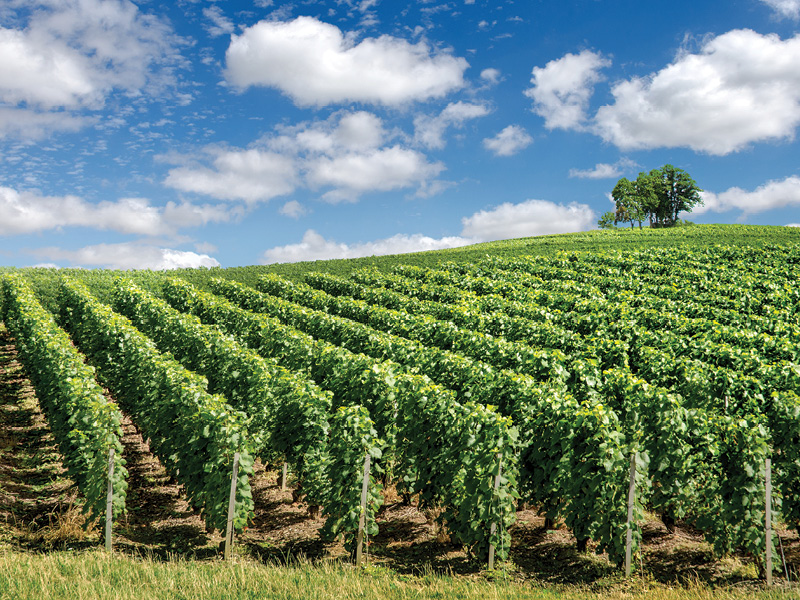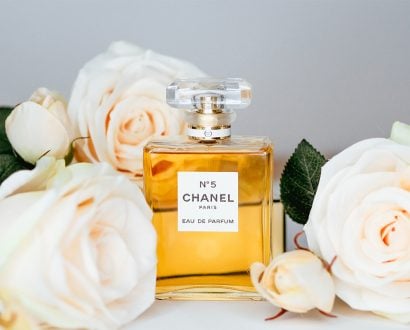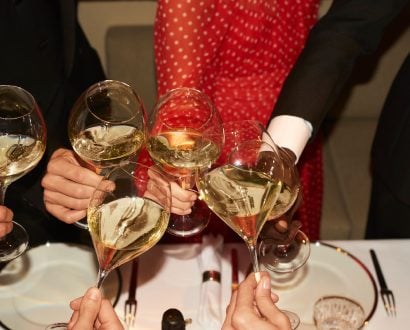In real life and in fiction, Champagne is often catapulted into the consciousness from characters as diverse as Winston Churchill, James Bond and even into the realms of rap with Kanye West and his cohorts all endorsing the sheer joy of sparkling wine.
Australia is now one of the biggest importers of Champagne globally, and we are embracing the effervescent liquid with an unquenchable thirst. We are now one of the world’s fastest growing Champagne markets, only just behind China and Russia, making us the sixth largest importer in the world.
In 2015, we imported 8.1 million bottles of Champagne — an increase of 24.31 per cent on the previous year’s figure of 6.5 million bottles. That looks set to rise again in an increasingly competitive market that sees supermarket chains like Aldi sell their own label Champagne for $25 a pop. It seems that everyone likes the taste of fizz in an increasingly democratic sparkly universe.

Closer to home, local sparkling wine styles have never looked better, all helping to spread the allure. In fact, the champion wine at the recent Sydney Royal Wine Show was the Arras Grand Vintage 2007 from Tasmania. This follows the same wine, just weeks earlier, being awarded the same plaudit at the Royal Queensland Wine Show. It’s rare that a sparkling wine is hailed as a champion wine at any wine show (let alone two) and that goes to show how far we have come in the development of the style. The chief of judges said that the Arras “was up there in terms of quality with many of the great Champagne houses.” The maker of Arras, Ed Carr, is now celebrated as being Australia’s best Sparkling winemaker and someone who has championed the terroir of Tasmania to ensure it is taken as seriously as those from the hallowed soils of Champagne itself.
What’s in a name — the ingredients of Champagne
The champenoise have guarded the name Champagne, and rightly so. This means that anyone outside the region making Sparkling wine does not have the right to call it Champagne.

The Spanish have Cava, the Italians have Prosecco and we have Sparkling wine, which sadly does not have the same romantic sounding label — but to be honest, it’s made in exactly the same manner.
The process of Méthode Champenoise sees three grape varietals — Pinot Noir, Chardonnay and Pinot Meunier — blended using base wines (still table wines from multiple vintages) or in the case of vintage Champagne, the wines from one exceptional vintage can be used. Once the still wine is blended it goes into bottle to undergo its secondary fermentation where the bubbles are formed. The bottles in the caves of most Champagne houses are stored underground for a minimum of 12–15 months on a riddling rack where each day they are turned. This turns the dead yeast cells (often referred to as lees cells), which helps to enhance the complexity of the resulting wine. The dead yeast congregates in the neck of the bottle as the riddling racks hold the bottles at an angle.
Finally, after anything from fifteen months to ten years, the bottle is ready to be disgorged. During this process, the neck of the bottle is frozen and the yeast cells removed before the wine undergoes what the French refer to as ‘dosage’ — the addition of sugar to the wine. This depends on the individual Champagne house, according to the style they are famed for. Some prefer no sugar, whereas others will add more to make a more commercial style. The bottle is then corked and sealed in the famed muselet (wire cage) that is so distinctively Champagne and the cause for so much trepidation the world over as people struggle to open a bottle.
A celebration at every turn…
If you think about it, there’s no more convivial drink than Champagne. It’s drunk at weddings, anniversaries, birthdays, is synonymous with victory, and elicits more joy than any other beverage. Of course we all know it’s too easy to drink on it’s own, but paired with canapés of smoked salmon or any delicate cured fish it’s a real winner. It’s one of those drinks that you could have an entire meal with due to the cleansing acidity and differing levels of complexity. It can also be a useful foil for cheese with one of the great pairings being Parmigiano Reggiano just served on its own — a match that will have you bubbling with excitement.







